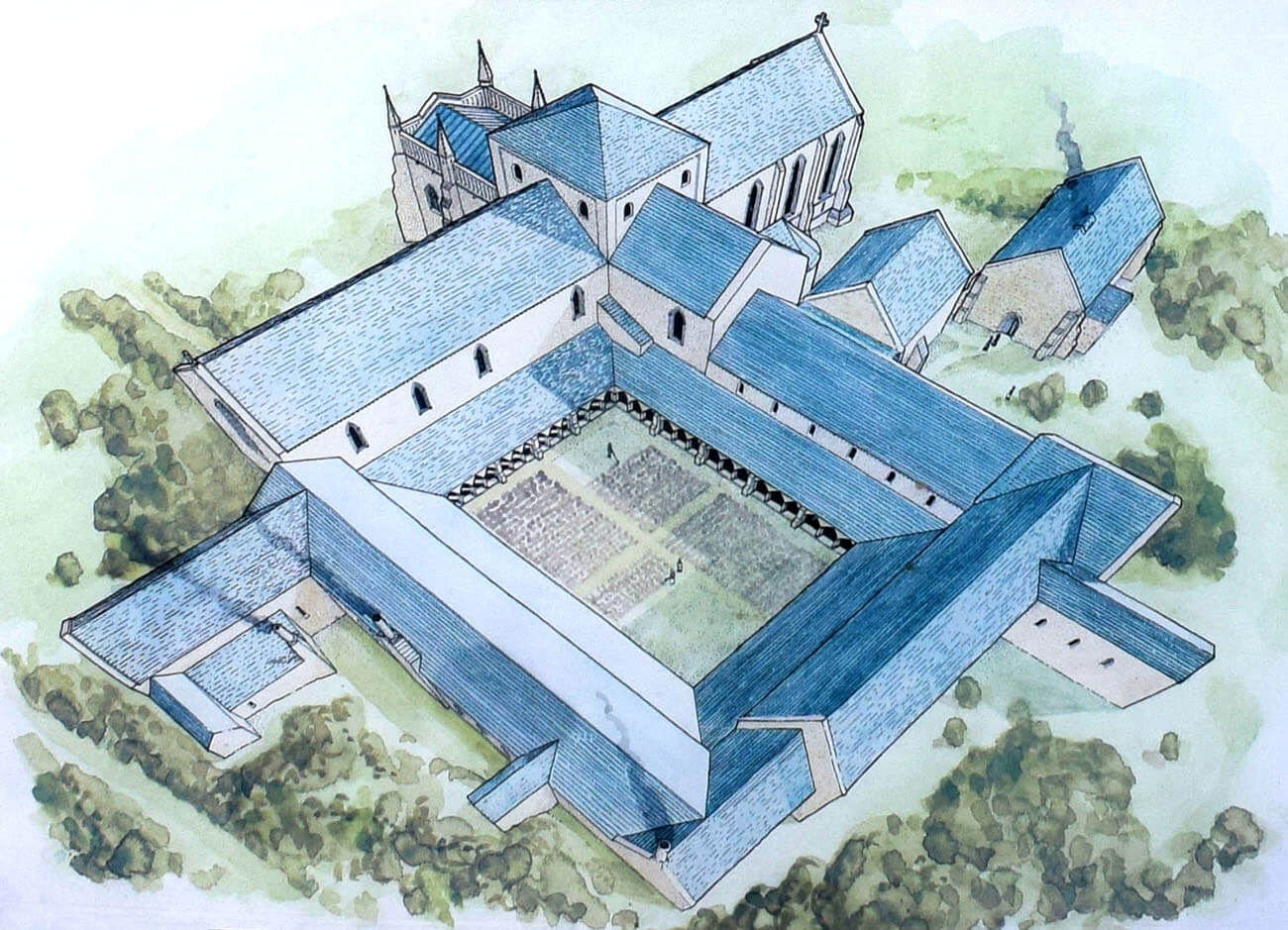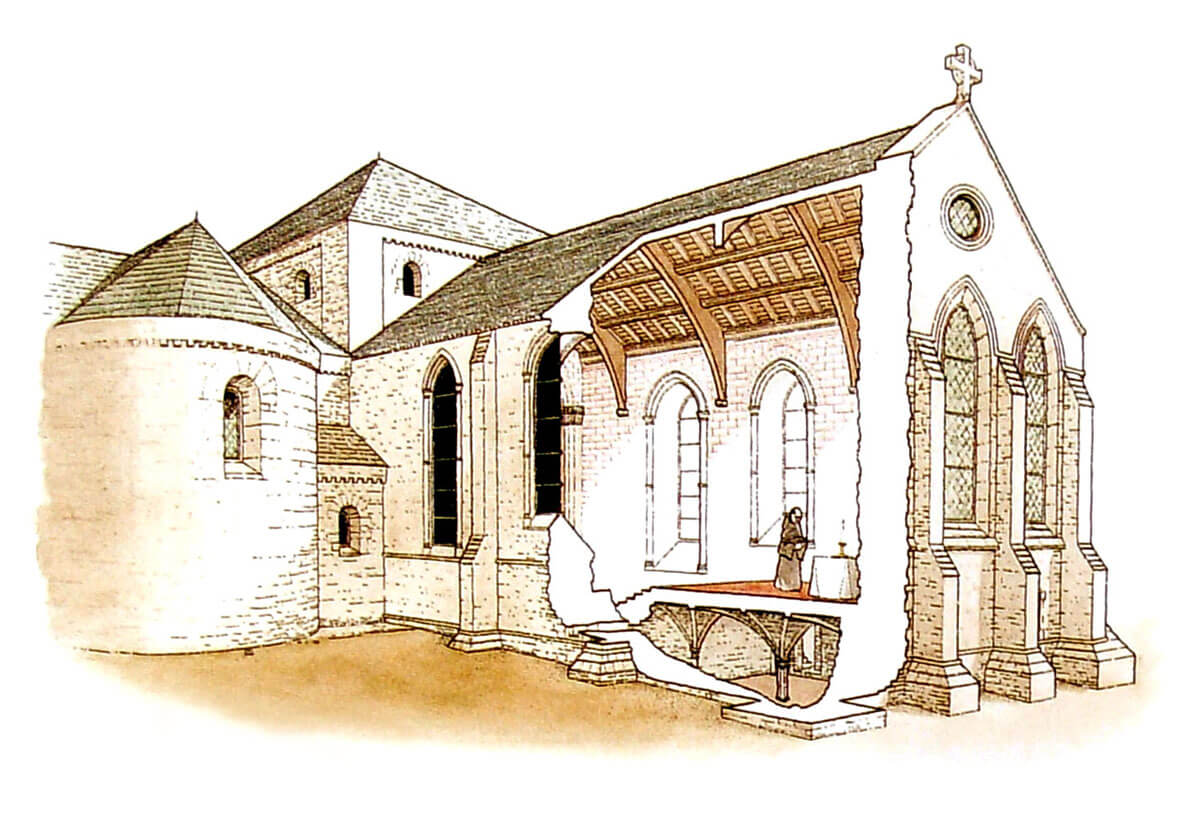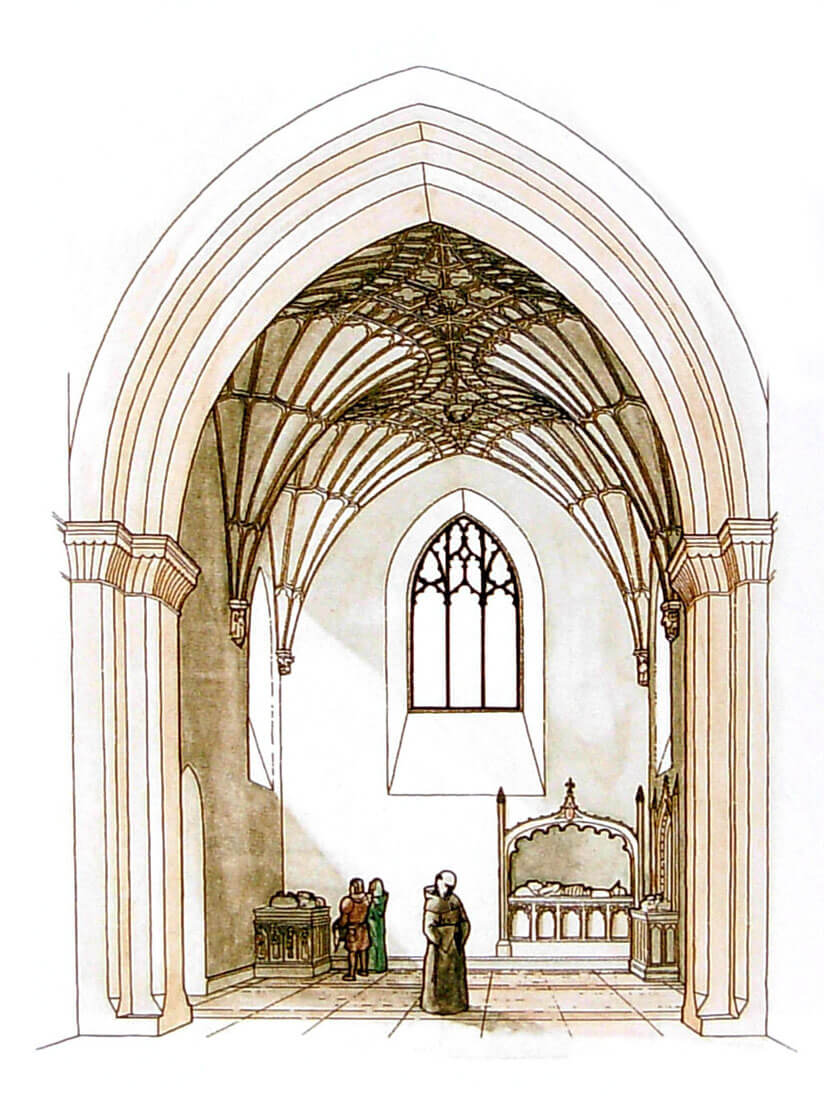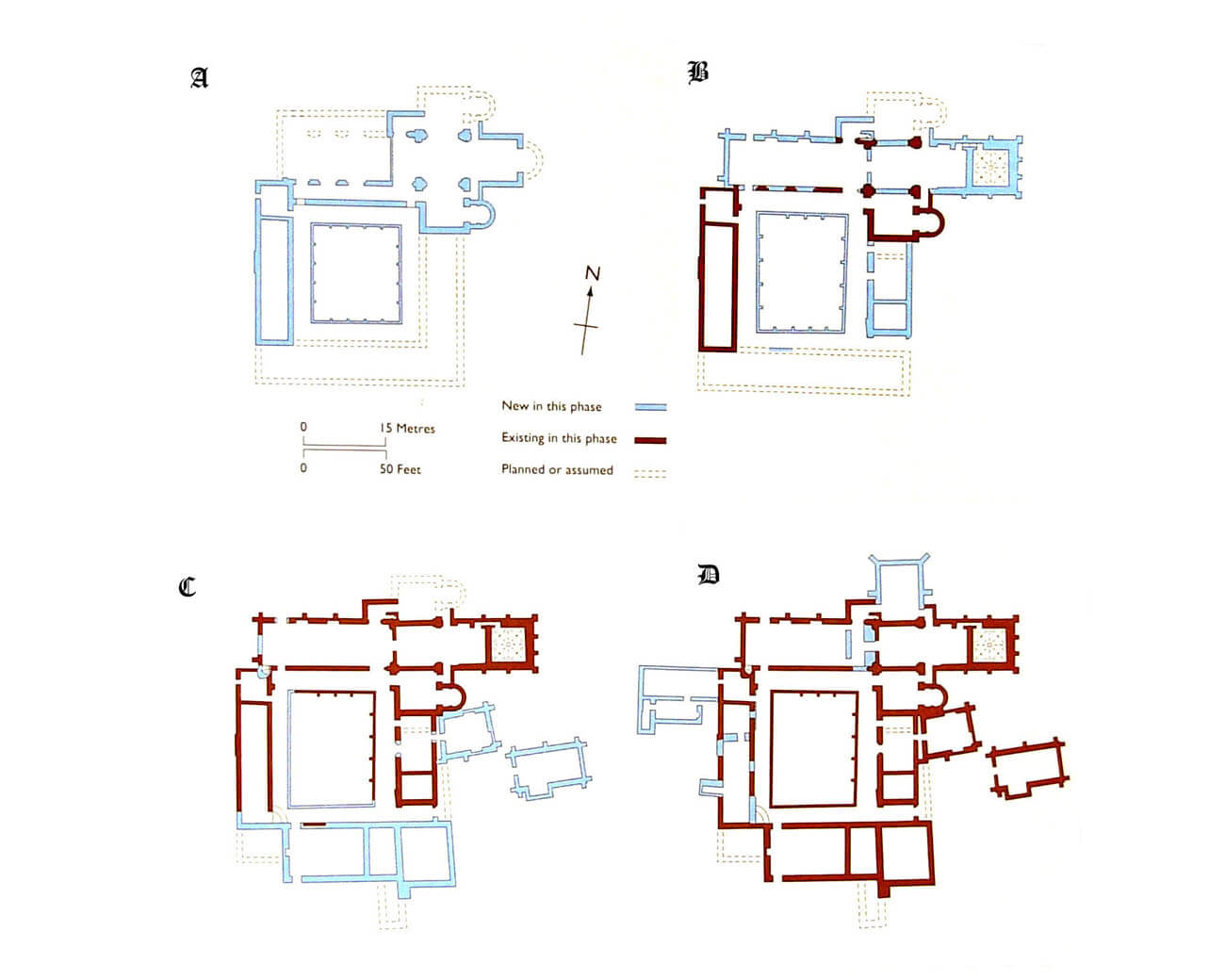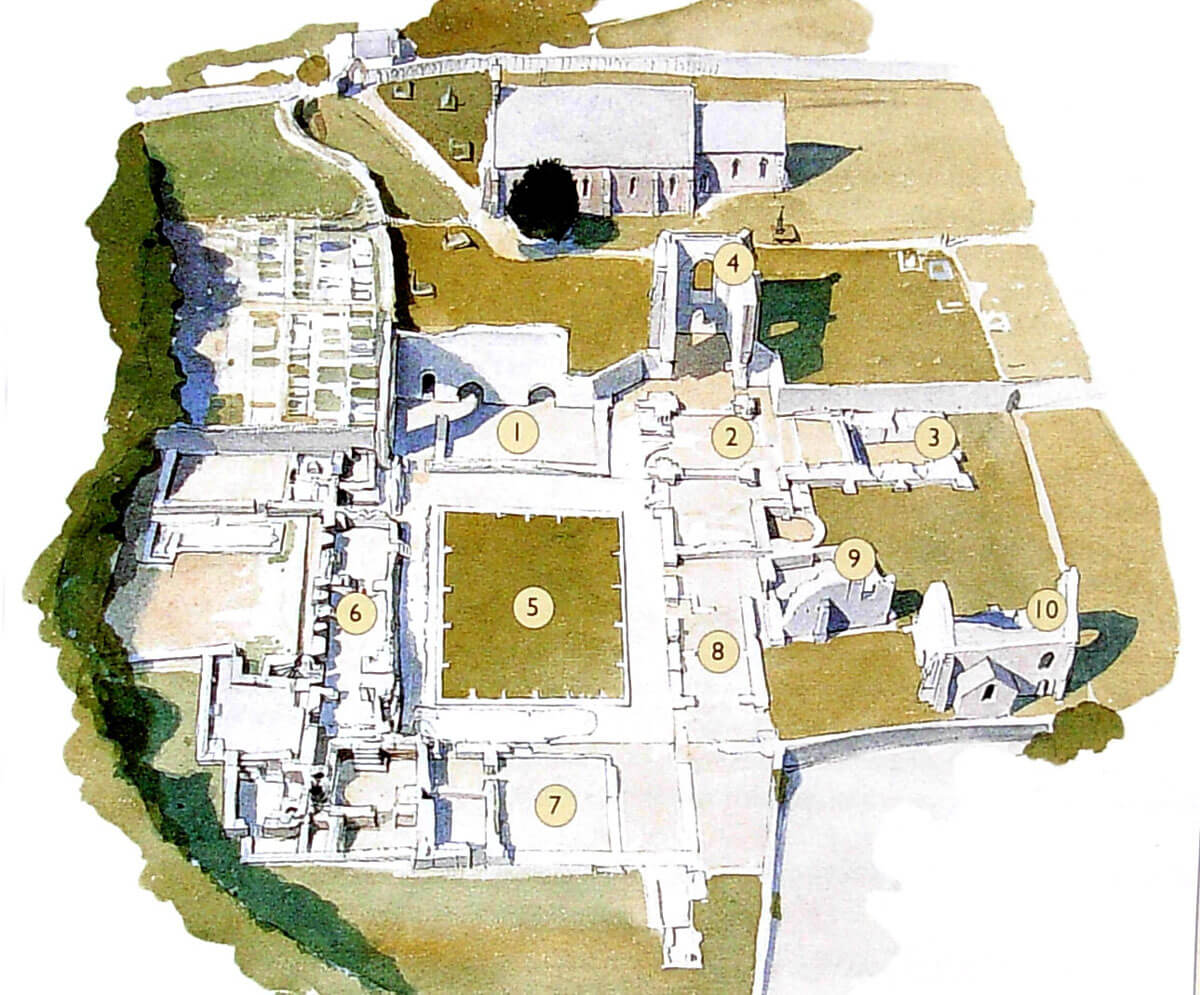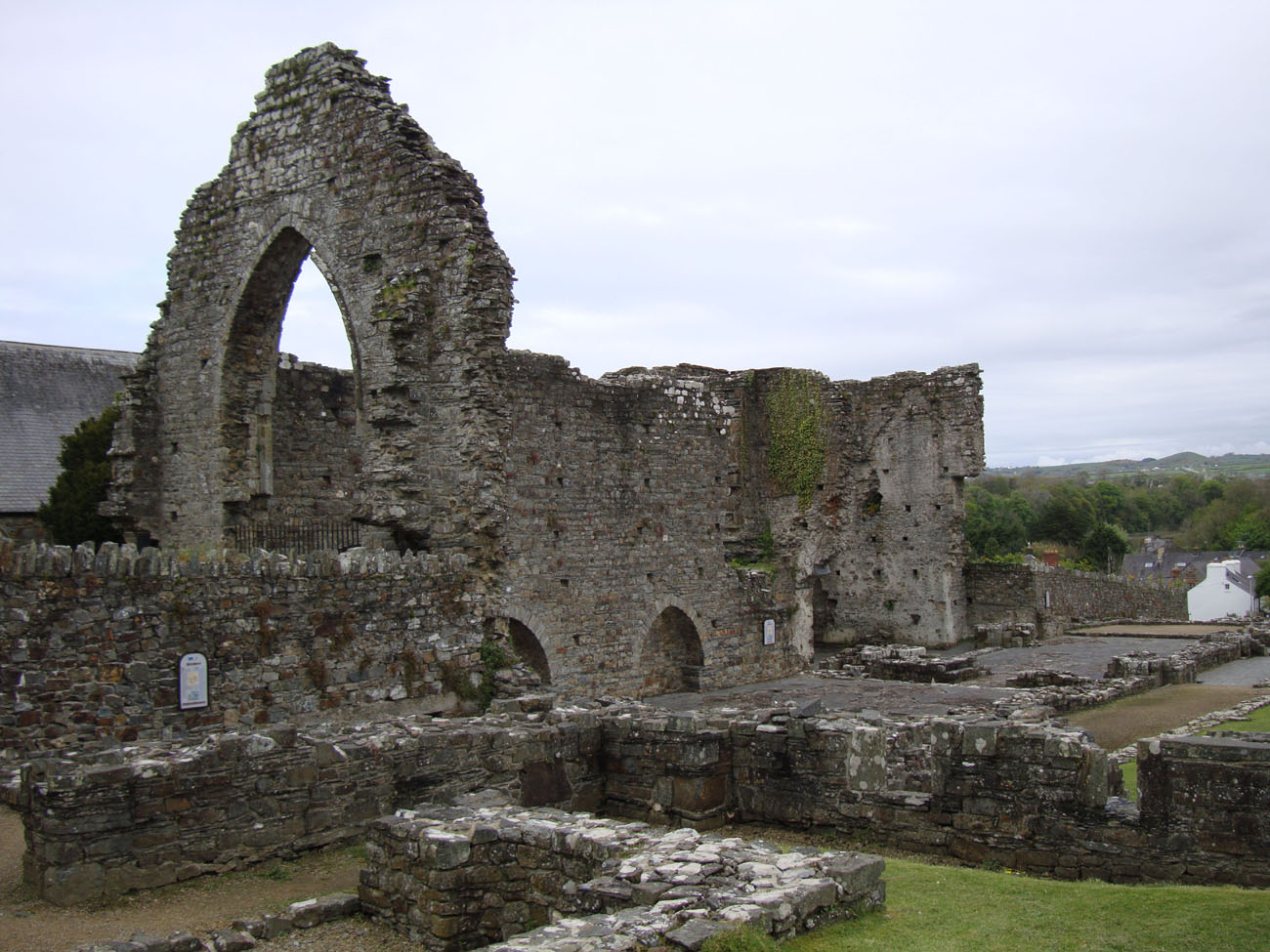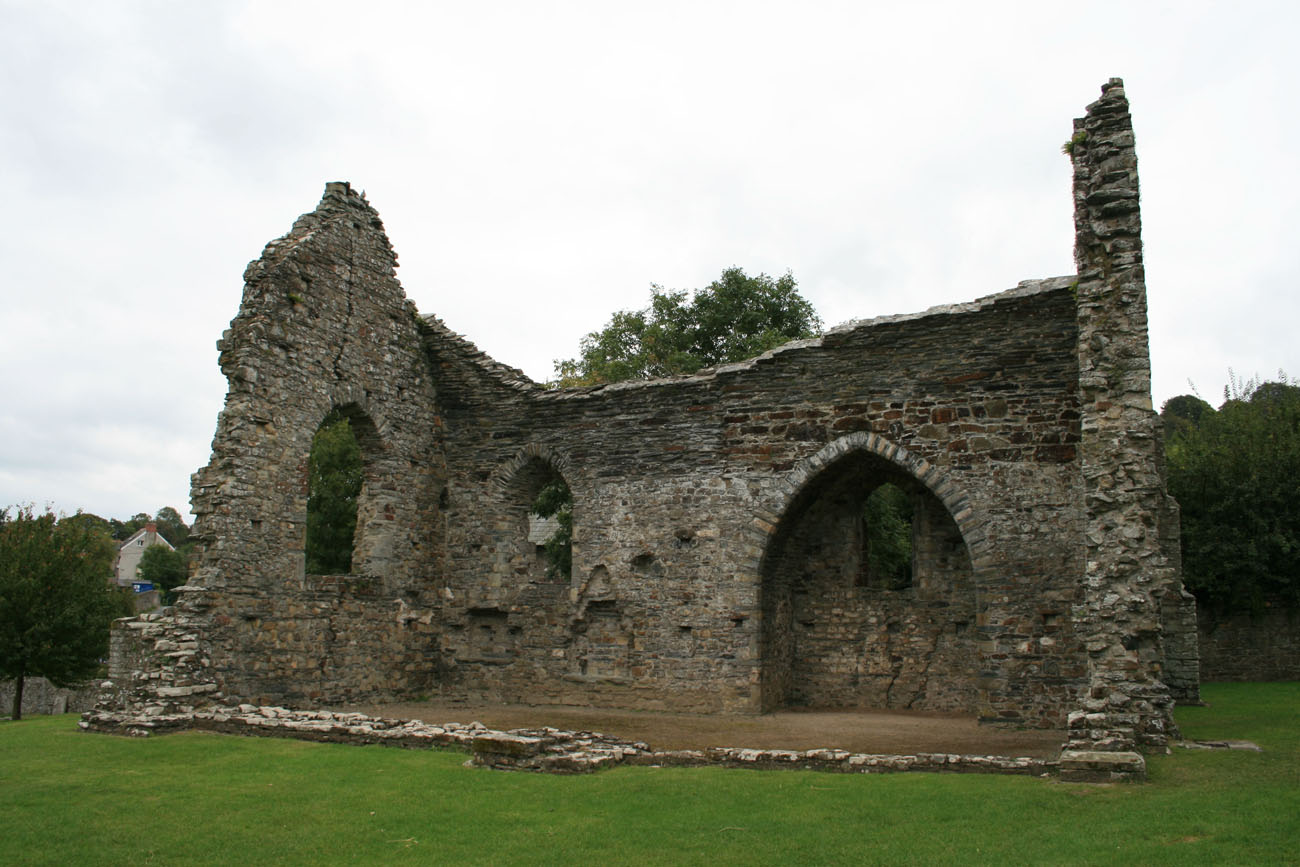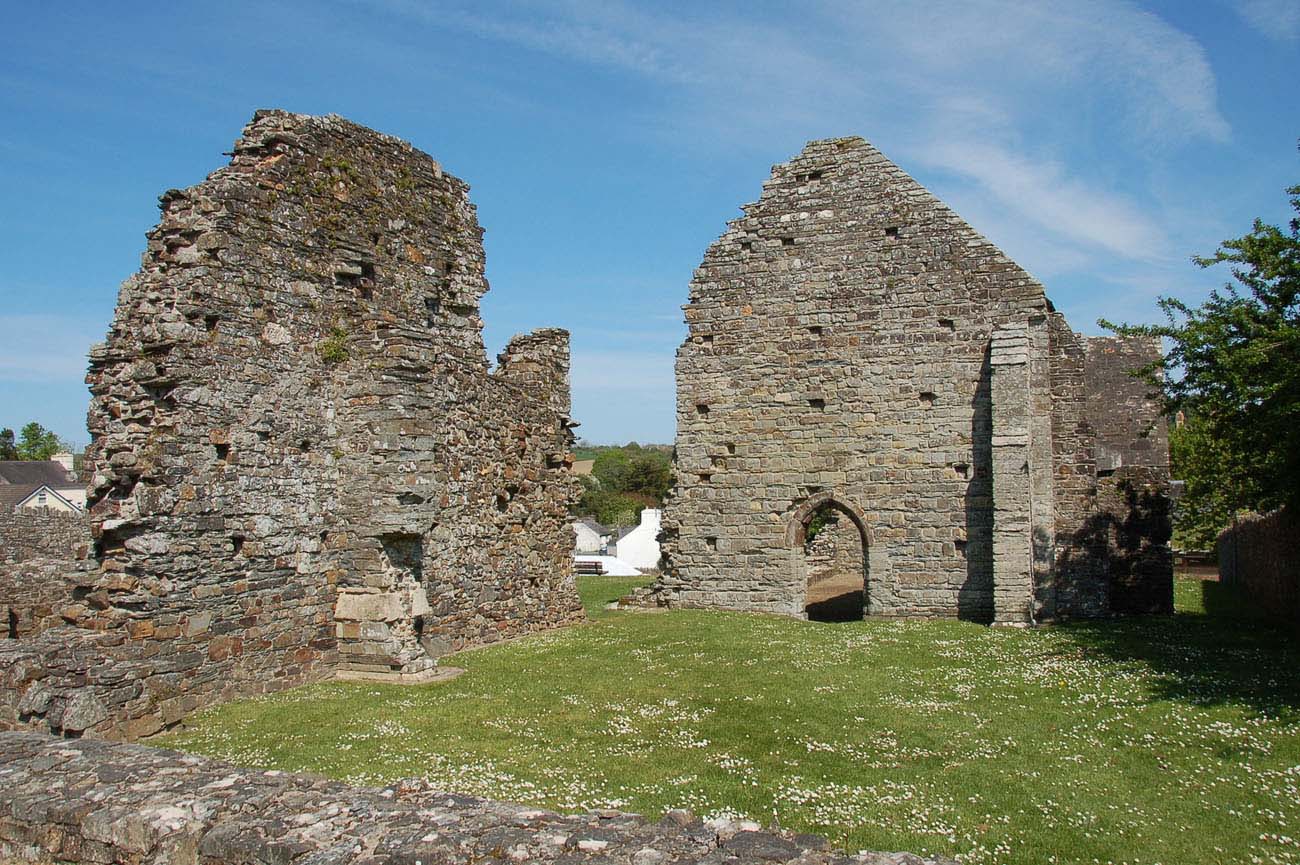History
Abbey of St Dogmaels was founded in 1113 for thirteen monks brought from the French convent of Tiron. The founders were Robert fitz Martin and his wife, Maud Peverel. In 1120, Abbot William of Tiron agreed to Martin’s request that the prior of St. Dogmaels be transformed into an abbey, but still subordinate to his native convent from France. Its first abbot was Fulchard, elected by Bishop Bernard of St Davids, who was to visit Tiron at least once every three years to maintain strong ties between the two religious houses.
In the first years of existence, the abbey was exposed to numerous dangers, as the lands on both banks of the Teifi River often changed hands during the Welsh-English conflicts. In 1136, the Anglo-Normans of Robert Fitz Martin were defeated in the nearby Battle of Crug Mawr and forced to withdraw. Two years later, the village and abbey of St. Dogmaels were plundered by the sons of Gruffudd Ap Cynan, Owain Gwynedd and Cadwaladr, and in 1165 the Welsh ruler Lord Rhys banished the monks from the nearby monastery in Cardigan. Despite the wars, the construction of the monastery progressed throughout most of the 12th century and had to be advanced, since in 1188 the abbey was visited by a famous monk, chronicler and writer, Gerald of Wales, who, along with Baldwin, the archbishop of Canterbury, was collecting support for the Third Crusade, during his trip around Wales .
In 1198, the abbey was put into the dispute over the election of the new bishop in St Davids after the death of Peter de Leia. The new candidates were Gerald from Wales and Walter, abbot of St Dogmaels, but the latter was disqualified by the lack of literacy skills. Both were initially rejected by Archbishop of Canterbury, although Geralt was elected by the local cathedral chapter. An angry archbishop, who did not want to fill the post with a Welshman, nominated Walter of St Dogmeals for the bishopric. The dispute reached all the way to Rome, and the Pope finally rejected both candidacies.
The mid-thirteenth century was a period of prosperity for the abbey, related with closer control of the surrounding lands by the Anglo-Normans and the reconstruction of the castle in nearby Cardigan around 1240. At that time, the construction of the nave of the monastery church was completed, cloisters were erected in the mid-thirteenth century, and at the end of the thirteenth and at the beginning of the fourteenth century, most of the monastery buildings, the infirmary and the chapter house were erected. In 1291, the abbey’s income was valued at £ 58, indicating its average size by Welsh standards (by comparison, the poor priory in Cardigan was valued at only £ 16).
In the fourteenth or fifteenth century, a significant part of the west wing of the abbey was rebuilt to provide better living conditions for the abbot and his guests, but during this period the monastery began to fall into debts. The abbot sent complaints to King Edward as early as in 1296 and 1317 complaining about the war desolation and too high taxes. The convent also had problems with attracting new members, especially since the mid-fourteenth century, when Black Death hit Wales, shrinking the number of monks in the monastery. St Dogmaels never fully recovered from the epidemic. During the episcopal visit from 1402, it was found that only four monks, including the abbot, lived in the abbey. Moreover, they were criticized for their gluttony, not following the monastery rule, drunkenness and contacts with women.
At the beginning of the 16th century, the situation of the convent improved slightly. The ruined church presbytery was renovated, the northern transept rebuilt in late gothic style, and the number of monks increased to six. Despite the gradual and slow improvement, due to the progressive Reformation, in 1536 the abbey was dissolved, like all other convents in the country, which according to Henry VIII’s order did not achieve an annual income of more than £ 200 (St Dogmaels had only £ 87 annual profit). Only eight monks and an abbot lived in the monastery at that time. Most of the abbey was rented to John Bradshaw of Presteigne in Radnorshire, who built a residence within it. For its construction, he used stones from the monastery buildings, which contributed to its rapid fall into total ruin.
Architecture
The abbey was founded west of Cardigan at the mouth of the Teifi River into the Irish Sea. It was located among meadows and fields, separated by a small stream flowing from the narrow valley to the south. It consisted of a church and monastery buildings adjacent to it from the south.
The church was initially planned to be erected as a structure based on a Latin cross plan with a three-aisle nave and a short four-sided chancel, probably ended with an apse in the east. The apse chapels were also to be located on both arms of the transept, and a four-sided tower was to be located above the crossing of the naves. Of these plans, only the chancel, southern transept, low tower, eastern bay of the nave and partly the southern aisle were able to be implemented in the 12th century. The church nave was completed in the first half of the 13th century, but in a significantly simplified, one-nave form, the previously erected southern aisle was transformed into the northern cloister, and the new nave was slightly extended to the west. The nave was quite unusual, because it did not have a western entrance portal, probably due to the nearby slope, which did not give much space. The entrances were located on the north-west and south sides, from where one could get to the cloisters. Near this portal, in the corner of the church, stairs were also leading to the attic above the nave or to the abbot’s rooms. The northern wall of the nave, apart from one four-light window, did not have more window openings, while in the fourteenth century a new ogival window with rich tracery decoration was inserted in the western facade. Originally, the floor of the nave was lined with stone slabs, in the 15th century replaced by smaller tiles. In its eastern part there was a stone rood screen with a portal in the middle, separating part of the church accessible to lay people from the part accessible only to monks. The top of the rood screen was reachable through a spiral staircase in the north-west part of the crossing of the naves. In this place, under the church tower, there was a choir of monks with stalls blocking the passage to the north and south transepts.
In the first half of the thirteenth century, the church chancel was extended by two bays, under which a crypt, unusual for Welsh monastery churches, was placed, probably intended for storing relics. Thanks to this, the main altar stood on a 60-centimeter high, reachable after a few steps. Stairs in the northern part of the chancel led to the crypt. It had thick walls illuminated with slit windows on three sides, a series of small niches for setting candles, and a rib vault supported by a central pillar and wall-pillars reaching the floor in the corners and in the center of each wall.
The last change in the church’s appearance was the late-gothic rebuilding of the northern transept from the beginning of the 16th century. Thanks to the strengthening of its walls from the outside by buttresses, it was possible to install a stone vault inside and to open a large ogival, four-light window in the northern wall and smaller three-light windows in two side walls. The sophisticated rib vault rested on corbels carved, among others, in the shape of angels and a lion. The northern transept, like the southern one, served as a passage, connecting the nave with the chancel, due to fencing of the central part of the church by monks’ stalls.
The inner courtyard surrounded by cloisters adjoined the southern wall of the church nave. Its central cloisters garth originally served as a garden where herbs and vegetables grown, while by the cloisters could get into most of the monastery buildings. They were covered with mono-pitched roofs based on ogival arcades and columns, connected by two by single capitals.
The oldest monastery rooms from the turn of the twelfth and thirteenth centuries were located in the west wing, where dormitory was probably initially located on the first floor and in the northern part of the ground floor the so-called a parlour – a room in which brothers could contact lay people. The main room of the west wing on the ground floor level housed a monastery pantry and was illuminated from the west by a series of narrow windows. In the fourteenth or fifteenth century, a perpendicular building was added to the west wing, with guest rooms and the abbot’s private chambers (including one warmed by a fireplace) and a chapel on the first floor.
In the southern wing from the end of the 13th and the beginning of the 14th century there was a refectory in the middle and in the extreme eastern part a so-called living room, with a latrine block protruding from the range. Its sewage chutes were directed towards a stream flowing nearby. In front of the refectory entrance portal was a lavabo in the form of a stone sink for washing hands before meals. In the western part of the wing there was probably a kitchen, after which traces in the form of three oval ovens remained, while from the east a refectory could be adjacent to the warming house, that is the only heated room in the monastery excluding the kitchen and infirmary.
The 13th-century east wing had two floors. The first floor probably housed the monks’ bedrooms – the dormitory (connected by the so-called night stairs with the church transept and the so-called day stairs with the cloister), while on the ground floor from the north, the sacristy and the day work rooms, followed by a passage to the infirmary, which was built at the end 13th century in a separate, detached building. The entrance to it led from the west through the ogival portal, and on the southern side there was a vaulted projection. At the end of the 13th or at the beginning of the 14th century, a chapter house was built, added to the east wing. The brothers gathered there every day to advise on the matters of the monastery and read the rule of the order.
Current state
Only ruined fragments have survived from the abbey buildings and the church. The northern and western walls of the nave, the northern transept, the fragment of the chapter house and the ruined infirmery building survived. Partially preserved is the crypt under two eastern bays of the presbytery and floor tiles from the fifteenth century on large areas of the nave. The remaining part of the abbey is outlined only by the low ground walls and foundations. The monument is under the protection of the Cadw government agency and open to the public.
bibliography:
Burton J., Stöber K., Abbeys and Priories of Medieval Wales, Chippenham 2015.
Hilling J., Cilgerran Castle, St Dogmaels Abbey, Cardiff 2000.
Salter M., Abbeys, priories and cathedrals od Wales, Malvern 2012.


